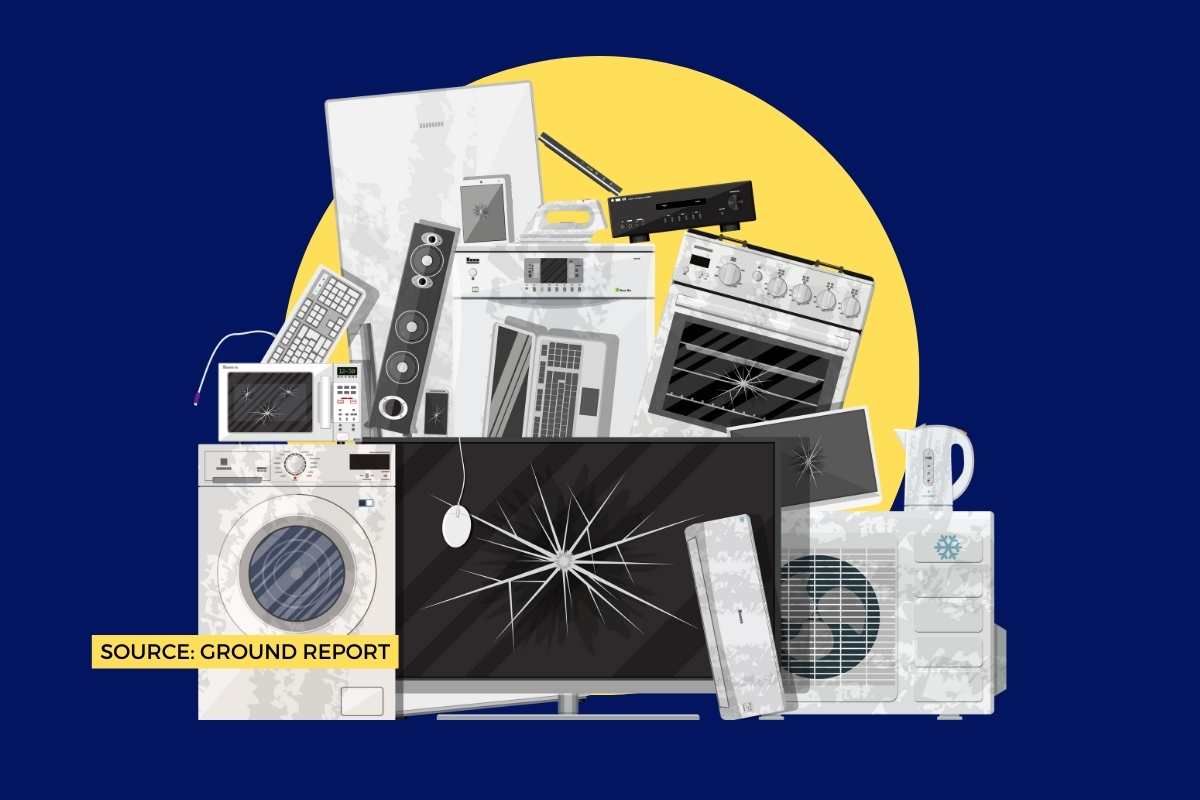Weddings are extravagant and overwhelming events in India. Rituals, décor, preparing invitations, and gourmet meals are all high on the list of priorities. This extensive several days event is the result of months of planning by several members of the family and planners. The majority of the time, environmental harm and wastage go unreported. The celebrations and environment should go together. Unfortunately, weddings generate a significant amount of waste all over the world.
The wedding industry around the world
The average wedding in the affluent United Arab Emirates costs $80,000 and can take up to a week. India’s wedding market is rising by 25% a year, while China’s wedding market, worth $57 billion, is growing at an average annual rate of 7.8%. According to a report, 245,513 weddings took place in Britain in 2019 with an average of 100 guests at each, using nearly 20kg of single-use plastic at every ceremony. That adds up to 4,910 tonnes of plastic potentially pouring into our oceans every year.
Food Waste
Weddings in India have become more extravagant in recent years. The ostentation goes well with the food also. Hundreds of varieties and a great stock of food served to make it a wasteful affair which would lead to unsustainable demand for natural resources. Weddings in India are known for their lavish décor and unrestrained celebrations. It’s an occasion where people display their wealth, social status, and standing in society. Food constitutes a major part of the expenditure and weddings are known for their sumptuous food. Any wedding is considered incomplete without delicious food. Today the number of dishes at times is 250 – 300. An average Indian wedding generates about 200-300 kg of food waste which amounts to almost 20% of the food going to waste. Cumulatively, it amounts to USD 14 billion worth of meals.
There is no clear data on how much plastic waste is produced at an Indian wedding. However, the gifts, water bottles, cutlery, and other stuff are all made out of plastic which amounts to a lot of waste that can be accumulated at an Indian wedding.
Auli’s wedding, and changing expenditure pattern
In 2019, the Auli wedding made headlines. 321 quintals of waste were left behind after the famed wedding of the South-Africa-based Gupta brothers’ sons in the Chamoli area. The wedding was a whopping 200-crore affair and had raised a lot of environmental concerns. This is just one example of the immoderate use of resources and waste produced. However, the expenditure pattern of the Indian middle class on social functions is changing. And, maybe for the worst. Those who belong to the top economic class have a tradition to spend lavishly. But now the rising middle class is also spending freely on social gatherings due to the rise in disposable income. Hence, more waste both plastic and food. Inevitably, the waste ends up in landfills.
Beyond plastic, and food there are a few more things that contribute to the carbon footprint of the wedding. For example, natural flowers are used for decoration. The clothes which bride and groom buy to wear for each ceremony. The jewelry, and ring. The travel of each guest, and their stay. The invitation cards. Most importantly, the lighting at the hall contributes to the carbon footprint of the wedding.
The sustainable way
To contextualize why we need to rethink the wedding industry in India, We need to start by understanding the sheer volume of waste it leads to. While in theory many of us know that waste would be a logical byproduct of weddings, the actual numbers are shocking as noted before. Hence, there is an urgent need to tackle this mindset that is not only affecting the resources and environment. But, also economically is extremely burdensome.
A post shared by The Wedding Brigade (@theweddingbrigade)
This year’s “big fat Indian wedding” was modified. Weddings are becoming more intimate occasions as e-invitations and online attendance grow common as a result of the pandemic. Furthermore, couples are increasingly becoming more interested in eco-friendly, waste-free celebrations. Many wedding planners and industry people are coming up with new ideas to make this special day for people economically and environmentally less taxing.
Sanna Vohra, founder, and CEO of The Wedding Brigade, an online portal that curates wedding fashion, suggests choosing paperless or recycled invites, opting for venues with recycling/composting facilities, buying from sustainable brands, and using locally sourced flowers or recycled material for decor.
There is a greater focus on replacing single-use plastic cutlery with steel jugs and glasses, wooden spoons, banana leaves, and areca plates. The flowers used as decorations are curated carefully and reused as dyes or compost.
The food waste is countered by introducing only a limited amount of items on the menu or by partnering with NGOs like Feeding India and Robin Hood Army.
These NGOs collect extra food from the wedding location and give it to the vulnerable section of society.
Conclusion
There are solutions. As individuals, we have to bring climate change or the environment into our priority conversations. While organizing weddings ask yourself or your planner to ensure sustainable measures during the entire event. There are solutions. Some are mentioned above. Try carbon offsetting. Invest in a green-sustainability project around you.
Again, there are solutions. Furthermore, it is the intent.
Support us to keep independent environmental journalism alive in India.
Keep Reading
The costliest water from Narmada is putting a financial burden on Indore
Indore’s Ramsar site Sirpur has an STP constructed almost on the lake
Indore Reviving Historic Lakes to Combat Water Crisis, Hurdles Remain
Indore’s residential society saves Rs 5 lakh a month, through rainwater harvesting
Follow Ground Report on X, Instagram and Facebook for environmental and underreported stories from the margins. Give us feedback on our email id greport2018@gmail.com.
Don’t forget to Subscribe to our weekly newsletter, Join our community on WhatsApp, and Follow our YouTube Channel for video stories.









